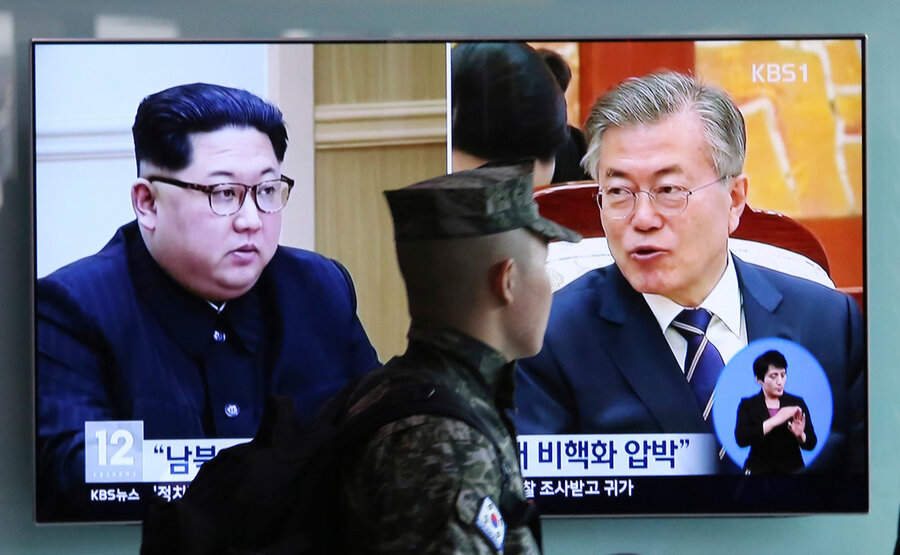Moon shot for peace between the Koreas
Loading...
In coming weeks, the world’s most heavily armed border, or the line between North and South Korea, could soon be the scene of the greatest peacemaking in 2018. That is, of course, if peace on the Korean Peninsula can be defined as something other than an end to military hostility.
On April 27, Kim Jong-un is expected to cross the 2.5-mile-wide demilitarized zone and become the first North Korean leader to set foot inside South Korea. His planned meeting with President Moon Jae-in would be only the third summit between the two Koreas since their war in 1950-53. Yet it may be the one with the greatest expectation of a quick result. “The most ideal solution,” Mr. Moon said last year in a rather bold statement, “would be to completely denuclearize North Korea in a one-shot deal.”
Then, if all goes well at that historic meeting, President Trump could, either in May or June, fly to a yet-unknown country and become the first sitting president of the United States to meet a North Korean leader. The fact that the CIA director, Mike Pompeo, secretly visited Pyongyang in early April means the US is laying the groundwork for a serious negotiation.
Summits, of course, are generally an opening only to make a deal on paper. Twice since 1994 the world has seen how North Korea has ripped up deals aimed at curbing its nuclear ambitions. In fact, its past deceit is now one of its greatest liabilities.
This time its real intentions are still unclear, but Moon, the main driver of the latest summitry, believes that talking gives an advantage to South Korea and its ally, the US. His position, which has differed from Mr. Trump’s in the past, is that a full-fledged treaty defining many aspects of peace, including trade and family exchanges, can come before the North starts to dismantle its nuclear and missile programs. Trump seems to have come around to this approach.
The North and South are still technically at war. Only a US-led armistice 65 years ago provided a temporary end to the conflict. If the countries can sign a treaty, one that must also be signed by the US and China, it means each Korea recognizes the other as a sovereign nation. The long-held notion of reunifying through armed force would be ruled out.
As with any negotiations, details matter. Will Mr. Kim insist that US troops and strategic weapons leave the South? Will the inspections of the North dismantling its nuclear arsenal be transparent? How much will the US reduce economic sanctions in return for concrete steps by the North?
Answers to such questions rely on the level of trust built up at these summits and at further talks. After years of mis-starts, threats, a build-up of arms, and minor confrontations, building trust may soon start on the world’s most dangerous border. It all depends on each side agreeing to a common vision of peace.





